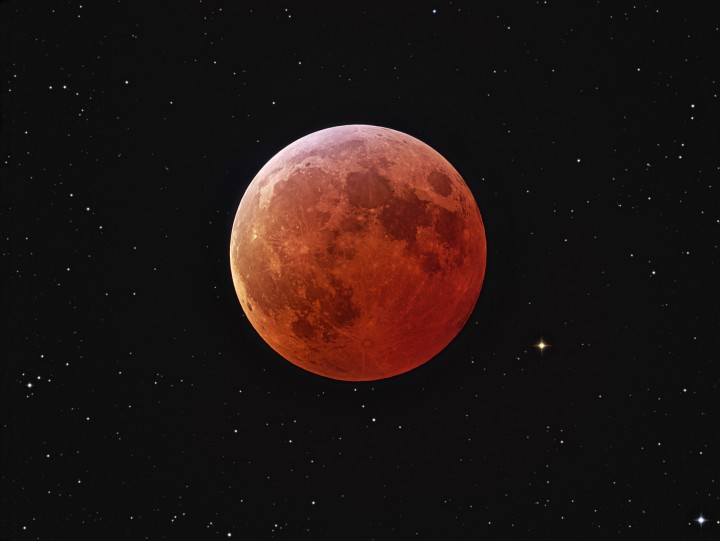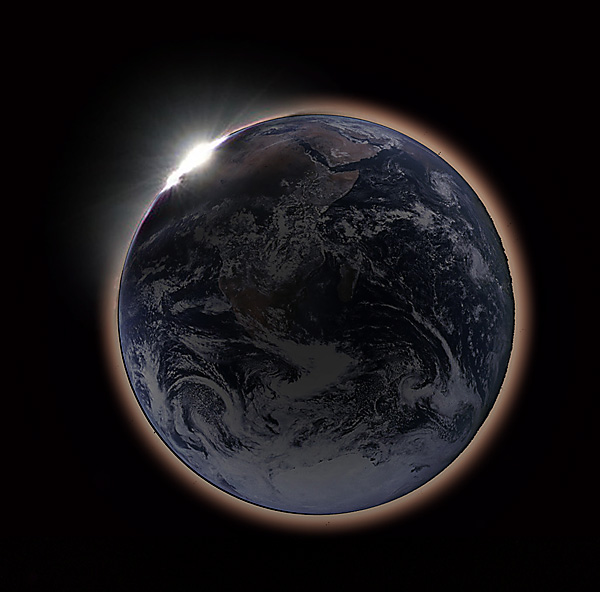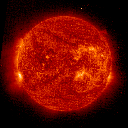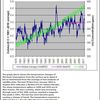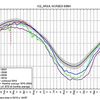Bloggfærslur mánaðarins, mars 2007
Laugardagur, 10. mars 2007
The Great Global Warming Swindle. Áhugaverð kvikmynd sem frumsýnd var fyrir skömmu.
 Síðasliðinn fimmtudag (8. mars) var fræðslumyndin "The Great Global Warming Swindle" sýnd á sjónvarpsstöðinni Channel 4 í Englandi. Myndin vakti mikla athygli.
Síðasliðinn fimmtudag (8. mars) var fræðslumyndin "The Great Global Warming Swindle" sýnd á sjónvarpsstöðinni Channel 4 í Englandi. Myndin vakti mikla athygli.
Í myndinni kemur fram fjöldi þekktra vísindamanna og segir álit sitt á hnatthitunarkenningunni. Líta má á myndina sem andsvar við mynd Al Gore "An Inconvenient Truth", en munurinn er sá að hér eru það vísindmenn, en ekki stjórnmálamaður, sem tala. Framsetning þessara tveggja kvikmynda er því ólík. Þessi kvikmynd The Great Global Warming Swindle er þó jafnvel ennþá áhugaverðari en kvikmynd Gore.
Vefsíða Channel 4 þar sem myndin er kynnt er hér.
Umsögn Ragnars Bjarnasonar "Svindl eða ekki?" er hér.
Sjón er sögu ríkari.
Kvikmyndin er hér í fullri lengd á Google Video (1 klst 15 mínútur). ***** fær 5 stjörnur hjá Google.
19. júní 2007. Prófa hér ef krækjan hér að ofan virkar ekki.
(Myndina má skoða í fullri skjástærð með því að smella á myndflötinn. Hægt er að velja um hvort myndin er skoðuð í venjulegum vefskoðara, eða hvort myndinni er hlaðið niður fyrst og síðan skoðuð með sérstöku forriti sem hægt er að sækja. Betri myndgæði nást þannig, en meira vesen).
Hér er torrentinn.
Þetta er mynd sem hugsandi fólk lætur ekki fram hjá sér fara. Sjálfsagt er hún ekki síður umdeild en mynd Al Gore.
Kynning á myndinni á vefsíðu Channel 4:
The Programme:
The film brings together the arguments of leading scientists who disagree with the prevailing consensus that carbon dioxide released by human industrial activity is the cause of rising global temperatures today.
That Earth's climate is changing and always has done is not disputed by anyone. That it is warming now is also not disputed by anyone. But some people think that the warming is our fault, whilst others believe we have nothing to do with it.
The film argues that rises in atmospheric carbon dioxide have nothing to do with climate change. Further, the present single-minded focus on reducing carbon emissions may have the unintended consequence of stifling development in the third world, prolonging endemic poverty and disease.
Recent research, presented in this film, apparently shows that the effect of cosmic radiation, and solar activity may explain fluctuations in global temperatures more precisely than the carbon dioxide theory.
An alternative explanation for rising global temperatures is based on research by the Danish Space Center. They found that as solar activity increases, cloud formation on Earth is significantly diminished and temperature rises.
‘Solar activity over the last hundred years, over the last several hundred years, correlates very nicely, on a decadal basis, with temperature.’
A respected Kenyan development expert says: ‘I don't see how a solar panel is going to power a steel industry, how a solar panel is going to power a railway network… There is somebody keen to kill the African dream, and the African dream is to develop. We are being told don't touch your resources, don't touch your oil, don't touch your coal; that is suicide.’
The film features an impressive roll-call of experts, in climatology, oceanography, meteorology, environmental science, biogeography and paleoclimatology, from such reputable institutions as MIT, Nasa, the International Arctic Research Centre, the Institut Pasteur, the Danish National Space Center and the Universities of London, Ottawa, Jerusalem, Winnipeg, Alabama and Virginia.
The arguments:
Earth's 4.5 billion year history is one long story of climate change. This fact is pretty much accepted by those who think global warming is a natural process, and those who think it's caused by man.
In more recent history there has been: a mini ice age in the seventeenth century when the Thames froze so solidly that fairs could regularly be held on the ice; a Medieval Warm Period, even balmier than today; and sunnier still was the so-called Holocene Maximum, which was the warmest period in the last 10,000 years.
Those who think global warming is a natural process point to the fact that in the last 10,000 years, the warmest periods have happened well before humans started to produce large amounts of carbon dioxide.
A detailed look at recent climate change reveals that the temperature rose prior to 1940 but unexpectedly dropped in the post-war economic boom, when carbon dioxide emissions rose dramatically.
There is some evidence to suggest that the rise in carbon dioxide lags behind the temperature rise by 800 years and therefore can't be the cause of it.
In the greenhouse model of global warming, heat from the sun's rays is trapped by greenhouse gases in the atmosphere. If it weren't for these gases, Earth would be too cold for life.
Greenhouse gases trap heat from the sun within the earth's atmosphere. This is the greenhouse effect. Traditional models predict that increasing concentrations of greenhouse gases lead to runaway heating.
If greenhouse warming were happening, then scientists predict that the troposphere (the layer of the earth's atmosphere roughly 10-15km above us) should heat up faster than the surface of the planet, but data collected from satellites and weather balloons doesn't seem to support this.
Those who think global warming is a natural process say that the troposphere is not heating up because man-made greenhouse gases are not causing the planet to heat up.
For some people, the final nail in the coffin of human-produced greenhouse gas theories is the fact that carbon dioxide is produced in far larger quantities by many natural means: human emissions are miniscule in comparison. Volcanic emissions and carbon dioxide from animals, bacteria, decaying vegetation and the ocean outweigh our own production several times over.
Others would argue that carbon dioxide isn't the only greenhouse gas and that human emissions could tip up a finely balanced system.
New evidence shows that that as the radiation coming from the sun varies (and sun-spot activity is one way of monitoring this) the earth seems to heat up or cool down. Solar activity very precisely matches the plot of temperature change over the last 100 years. It correlates well with the anomalous post-war temperature dip, when global carbon dioxide levels were rising.
In fact, what is known of solar activity over the last several hundred years correlates very well with temperature. This is what some scientists are beginning to believe causes climate change. Others feel that solar activity only explains the fine details of temperature change.
So how does the sun affect the earth's temperature? The process scientists suggest is that as earth moves through space, the atmosphere is constantly bombarded by ever-present cosmic rays. As these particles hit water vapour evaporating from the oceans, clouds form in the atmosphere. Clouds shield Earth from some of the sun's radiation and have a cooling effect.
When solar activity is high, there is an increase in solar wind and this has the effect of reducing the amount of cosmic radiation which reaches Earth.
When less cosmic radiation reaches Earth, fewer clouds form and the full effects of the sun's radiation heats the planet. But is the effect of solar activity really enough to explain away global warming caused by the greenhouse effect?
Vísindamenn sem koma fram í myndinni:
-- Dr. Pat Michaels - Prófessor í umhverfisvísindum, University of Virginia
-- Dr. Richard Lindzen - Prófessor í veðurfræði, MIT
-- Dr. Henrik Svensmark - Forstöðumaður Centre for Sun-Climate Research við Danish National Space Center
-- Dr. Eigil Friis-Christensen - Forstöðumaður Danish Space Center
-- Dr. Tim Ball - Loftslagsfræðingur. Prófessor emeritus við University of Winnipeg
-- Dr. Ian Clark - Prófessor í Isotope hydrogeology og fornveðurfræði, University of Ottawa
-- Nigel Calder - Fyrrum ritstjóri New Scientist Editor. Höfundur ásamt Henrik Svensmark að bókinni The Chilling Stars
-- Dr. Philip Stott - Prófessor Emeritus í Biogeography, University of London
-- Dr. Nir Shaviv - Associate Prófessor, The Hebrew University of Jerusalem
-- Dr. Paul Reiter - Prófessor, Institut Pasteur, París
-- Dr. John Christy - Prófessor og forstöðumaður Earth System Science Center, NSSTC University of Alabama
-- Dr. Roy Spencer - Principal research scientist for University of Alabama in Huntsville. In the past, he served as Senior Scientist for Climate Studies at NASA's Marshall Space Flight Center in Huntsville, Alabama
-- Dr. Patrick Moore - Stofnaði Greenpeace ásamt fleirum.
-- Dr. Piers Corbyn - Forstöðumaður Weather Action
-- Nigel Lawson - Lord Lawson of Blaby
-- Dr. Carl Wunsch - Prófessor í eðlisfræðilegri haffræði, Department of Earth, Atmospheric, and Planetary Sciences, MIT. Eftir að myndin var frumsýnd kvartaði Carl Wunsch yfir því að hann hefði ekki vitað hvers konar mynd væri verið að framleiða. Það er því vert að fylgjast sérstaklega vel með því hann segir í myndinni. Sjá grein um málið hér hjá The National Post
-- Dr. Fred Singer - President Science & Environmental Policy Project, Prófessor við George Mason University og Prófessor Emeritus í umhverfisvísindum við University of Virginia
-- Dr. Chris Landsea - Formerly a research meteorologist with Hurricane Research Division of Atlantic Oceanographic & Meteorological Laboratory at NOAA, is now the Science AND Operations Officer at the National Hurricane Center
-- James Shikiwati - Kenyan economist and Director of the Inter Region Economic Network
-- Dr. Syun-Ichi Akasofu - Director of the International Arctic research Centre
Vísindi og fræði | Breytt 19.6.2007 kl. 17:05 | Slóð | Facebook | Athugasemdir (32)
Föstudagur, 2. mars 2007
Tunglmyrkvinn laugardaginn 3. mars.
Væntanlega viðrar ekki vel fyrir stjörnuskoðun meðan á tunglmyrkvanum stendur. Það er þó aldrei að vita nema tunglið gægist milli skýja.
Á Stjörnufræðivefnum www.stjornuskodun.is er góð lýsing á tunglmyrkvanum. Þar stendur m.a:
"Þann 3. mars næstkomandi (á laugardagskvöld) verður almyrkvi á tungli. Skuggi jarðar byrjar að færast yfir tunglið kl. 21:30 en sjálfur almyrkvinn hefst klukkan 22:44. Honum lýkur 23:57.
Verði veður hagstætt laugardaginn 3. mars næstkomandi ættu allir stjörnuáhugamenn að líta til himins og verða vitni að glæsilegu sjónarspili. Tunglið gengur þá inn fyrir skugga jarðar og almyrkvi á tungli á sér stað. Almyrkvinn 3. mars er sá eini sem sést frá Íslandi á þessu ári en næsti sýnilegi almyrkvi verður 21. febrúar árið 2008. Almyrkvinn nú er jafnframt sá fyrsti síðan 28. október árið 2004...."
Á Stjörnufræðivefnum er mikill fróðleikur um tunglmyrkvann sem vert er að skoða.
Mjög góð lýsing á tunglmyrkvanum er á bloggsíðu Finns Malmquist.
Myndin hér fyrir neðan er af almyrkvanum 3. mars síðastliðinn. Meira hér.
Ekki er nauðsynlegt að nota stjörnukíki til að fylgjast með myrkvanum, en miklu munar að nota venjulegan handsjónauka.
Hvernig ætli tunglmyrkvinn líti út séð frá tunglinu? Það sést á neðri myndinni, sem er reyndar samsett mynd úr mynd sem tekin var af jörðinni frá tunglinu og mynd af sólmyrkva. Auðvitað er þetta sólmyrkvi sem karlinn í tunglinu sér, því jörðin skyggir á sólina. Meira um þessa mynd á vefsiðunni Astronomical Picture of the Day.
Þegar rétt sést í sólina, eins og á myndinni, er talað um demantshring. Nánar hér.
Tunglmyrkvi
Vísindi og fræði | Breytt 8.3.2007 kl. 22:21 | Slóð | Facebook | Athugasemdir (9)
Um bloggið
Ginnungagap
Ýmislegt
Loftslag
Teljari
Álverð
Sólin í dag:
(Smella á mynd)
.
Olíuverðið í dag:
Nýjustu færslur
- Kínverskur loftbelgur yfir Ameríku, og Amerískur belgur yfir ...
- Vísindavefurinn: Getum við seinkað klukkunni á Íslandi og fen...
- Sjálfstæðisflokkurinn með tæplega 19% meira fylgi en Samfylki...
- Bjarni Sigurðsson harmonikkusnillingur frá Geysi. Fáein orð...
- Hvers vegna valdi Apple ekki Ísland fyrir gagnaver...?
Heimsóknir
Flettingar
- Í dag (19.7.): 0
- Sl. sólarhring: 11
- Sl. viku: 105
- Frá upphafi: 0
Annað
- Innlit í dag: 0
- Innlit sl. viku: 74
- Gestir í dag: 0
- IP-tölur í dag: 0
Uppfært á 3 mín. fresti.
Skýringar
Tenglar
Tenglar
Ýmsar vefsíður
- Efnisyfirlit pistla
- Lofthiti - Sjávarstaða - Hafís - Sólvirkni... Beintengdir ferlar
- Club du Soleil Greinar um samaspil sólar og veðurfars
- Stjörnufræðivefurinn
- Astronomy Picture of the Day
- Climate4you
- Watts Up With That?
- World Climate Report
- CO2 Science
- The Reference Frame
- Climate-Audit
- ICECAP
- The Air Went
- Science Sceptical Blog
- Roy Spencer
- Friends of Sience
- Prometheus
- Öldur aldanna. Sjaldan er ein báran stök - einnig í veðurfari? (2003) Vefsíða ÁHB
- Gróðurhúsaáhrif eða eðlilegar sveiflur í virkni sólar? (Grein í Lesbók Mbl. 20. júní 1998) Höfundur Ágúst H. Bjarnason
- Er jörðin að hitna?-Ekki er allt sem sýnist (1998) Vefsíða ÁHB
Uppskriftir
Ýmsar mataruppskriftir
Myndaalbúm
Bloggvinir
-
 majab
majab
-
 ragu
ragu
-
 amadeus
amadeus
-
 andres08
andres08
-
 apalsson
apalsson
-
 asabjorg
asabjorg
-
 askja
askja
-
 astromix
astromix
-
 baldher
baldher
-
 biggibraga
biggibraga
-
 bjarkib
bjarkib
-
 bjarnijonsson
bjarnijonsson
-
 bjarnimax
bjarnimax
-
 bjorn-geir
bjorn-geir
-
 blindur
blindur
-
 bofs
bofs
-
 brandarar
brandarar
-
 daliaa
daliaa
-
 darwin
darwin
-
 duddi9
duddi9
-
 ea
ea
-
 egillsv
egillsv
-
 einari
einari
-
 einarstrand
einarstrand
-
 elinora
elinora
-
 elvira
elvira
-
 emilhannes
emilhannes
-
 esv
esv
-
 eyjapeyji
eyjapeyji
-
 fhg
fhg
-
 finder
finder
-
 finnur
finnur
-
 fjarki
fjarki
-
 flinston
flinston
-
 frisk
frisk
-
 gattin
gattin
-
 geiragustsson
geiragustsson
-
 gillimann
gillimann
-
 gretaro
gretaro
-
 gthg
gthg
-
 gudmbjo
gudmbjo
-
 gudni-is
gudni-is
-
 gummibraga
gummibraga
-
 gun
gun
-
 gutti
gutti
-
 haddi9001
haddi9001
-
 halldorjonsson
halldorjonsson
-
 halldors
halldors
-
 hlini
hlini
-
 hof
hof
-
 hordurhalldorsson
hordurhalldorsson
-
 hreinsamviska
hreinsamviska
-
 hronnsig
hronnsig
-
 hugdettan
hugdettan
-
 icekeiko
icekeiko
-
 ingibjorgelsa
ingibjorgelsa
-
 jakobbjornsson
jakobbjornsson
-
 jakobk
jakobk
-
 johannesthor
johannesthor
-
 johnnyboy99
johnnyboy99
-
 jonaa
jonaa
-
 jonasgunnar
jonasgunnar
-
 jonmagnusson
jonmagnusson
-
 jonpallv
jonpallv
-
 jonthorolafsson
jonthorolafsson
-
 juliusvalsson
juliusvalsson
-
 karljg
karljg
-
 katrinsnaeholm
katrinsnaeholm
-
 kikka
kikka
-
 kje
kje
-
 klarak
klarak
-
 kolbrunb
kolbrunb
-
 krissiblo
krissiblo
-
 ksh
ksh
-
 kt
kt
-
 lehamzdr
lehamzdr
-
 liljabolla
liljabolla
-
 lillagud
lillagud
-
 lindalea
lindalea
-
 lucas
lucas
-
 maeglika
maeglika
-
 maggij
maggij
-
 maggiraggi
maggiraggi
-
 marinomm
marinomm
-
 martasmarta
martasmarta
-
 marzibil
marzibil
-
 mberg
mberg
-
 midborg
midborg
-
 minos
minos
-
 morgunbladid
morgunbladid
-
 mosi
mosi
-
 mullis
mullis
-
 naflaskodun
naflaskodun
-
 nimbus
nimbus
-
 nosejob
nosejob
-
 omarbjarki
omarbjarki
-
 ormurormur
ormurormur
-
 palmig
palmig
-
 perlaoghvolparnir
perlaoghvolparnir
-
 peturmikli
peturmikli
-
 photo
photo
-
 possi
possi
-
 prakkarinn
prakkarinn
-
 raggibjarna
raggibjarna
-
 rattati
rattati
-
 ravenyonaz
ravenyonaz
-
 redlion
redlion
-
 rs1600
rs1600
-
 rynir
rynir
-
 saemi7
saemi7
-
 sesseljamaria
sesseljamaria
-
 sigfus
sigfus
-
 sigurgeirorri
sigurgeirorri
-
 sjalfstaedi
sjalfstaedi
-
 sjerasigvaldi
sjerasigvaldi
-
 skari60
skari60
-
 skulablogg
skulablogg
-
 sleggjudomarinn
sleggjudomarinn
-
 stebbix
stebbix
-
 steinibriem
steinibriem
-
 steinnhaf
steinnhaf
-
 stinajohanns
stinajohanns
-
 stjornuskodun
stjornuskodun
-
 storibjor
storibjor
-
 straitjacket
straitjacket
-
 summi
summi
-
 tannibowie
tannibowie
-
 thil
thil
-
 thjodarskutan
thjodarskutan
-
 throsturg
throsturg
-
 toro
toro
-
 tryggvigunnarhansen
tryggvigunnarhansen
-
 valdimarjohannesson
valdimarjohannesson
-
 valdinn
valdinn
-
 vefritid
vefritid
-
 vey
vey
-
 vidhorf
vidhorf
-
 vig
vig
-
 visindin
visindin
-
 vulkan
vulkan
-
 kristjan9
kristjan9
-
 arkimedes
arkimedes
-
 kliddi
kliddi
-
 eliasbe
eliasbe
Eldri færslur
- Febrúar 2023
- Janúar 2019
- Maí 2018
- Júlí 2017
- Maí 2017
- Febrúar 2017
- Janúar 2017
- Nóvember 2016
- Október 2016
- September 2016
- Júlí 2016
- Apríl 2016
- Mars 2016
- Febrúar 2016
- Janúar 2016
- Desember 2015
- Nóvember 2015
- Október 2015
- Ágúst 2015
- Júní 2015
- Maí 2015
- Apríl 2015
- Mars 2015
- Febrúar 2015
- Janúar 2015
- Desember 2014
- Nóvember 2014
- Október 2014
- September 2014
- Ágúst 2014
- Júlí 2014
- Júní 2014
- Maí 2014
- Apríl 2014
- Mars 2014
- Febrúar 2014
- Janúar 2014
- Desember 2013
- Nóvember 2013
- Október 2013
- September 2013
- Ágúst 2013
- Júlí 2013
- Júní 2013
- Maí 2013
- Apríl 2013
- Mars 2013
- Febrúar 2013
- Janúar 2013
- Desember 2012
- Nóvember 2012
- September 2012
- Ágúst 2012
- Júlí 2012
- Júní 2012
- Maí 2012
- Apríl 2012
- Mars 2012
- Febrúar 2012
- Janúar 2012
- Desember 2011
- Nóvember 2011
- Október 2011
- September 2011
- Ágúst 2011
- Júlí 2011
- Júní 2011
- Apríl 2011
- Mars 2011
- Febrúar 2011
- Janúar 2011
- Desember 2010
- Nóvember 2010
- Október 2010
- September 2010
- Ágúst 2010
- Júlí 2010
- Júní 2010
- Maí 2010
- Apríl 2010
- Mars 2010
- Febrúar 2010
- Janúar 2010
- Desember 2009
- Nóvember 2009
- Október 2009
- September 2009
- Ágúst 2009
- Júlí 2009
- Júní 2009
- Maí 2009
- Apríl 2009
- Mars 2009
- Febrúar 2009
- Janúar 2009
- Desember 2008
- Nóvember 2008
- Október 2008
- September 2008
- Ágúst 2008
- Júlí 2008
- Júní 2008
- Maí 2008
- Apríl 2008
- Mars 2008
- Febrúar 2008
- Janúar 2008
- Desember 2007
- Nóvember 2007
- Október 2007
- September 2007
- Ágúst 2007
- Júlí 2007
- Júní 2007
- Apríl 2007
- Mars 2007
- Febrúar 2007
- Janúar 2007
- Desember 2006
- Nóvember 2006
- Október 2006
- September 2006
Færsluflokkar
- Bloggar
- Bækur
- Dægurmál
- Evrópumál
- Ferðalög
- Fjármál
- Fjölmiðlar
- Heilbrigðismál
- Heimspeki
- Íþróttir
- Kjaramál
- Kvikmyndir
- Lífstíll
- Ljóð
- Löggæsla
- Mannréttindi
- Matur og drykkur
- Menning og listir
- Menntun og skóli
- Samgöngur
- Sjónvarp
- Spaugilegt
- Spil og leikir
- Stjórnmál og samfélag
- Sveitarstjórnarkosningar
- Tónlist
- Trúmál
- Trúmál og siðferði
- Tölvur og tækni
- Umhverfismál
- Utanríkismál/alþjóðamál
- Vefurinn
- Viðskipti og fjármál
- Vinir og fjölskylda
- Vísindi og fræði

